Travelling Solo to Hampi: A Story of Ancient Town
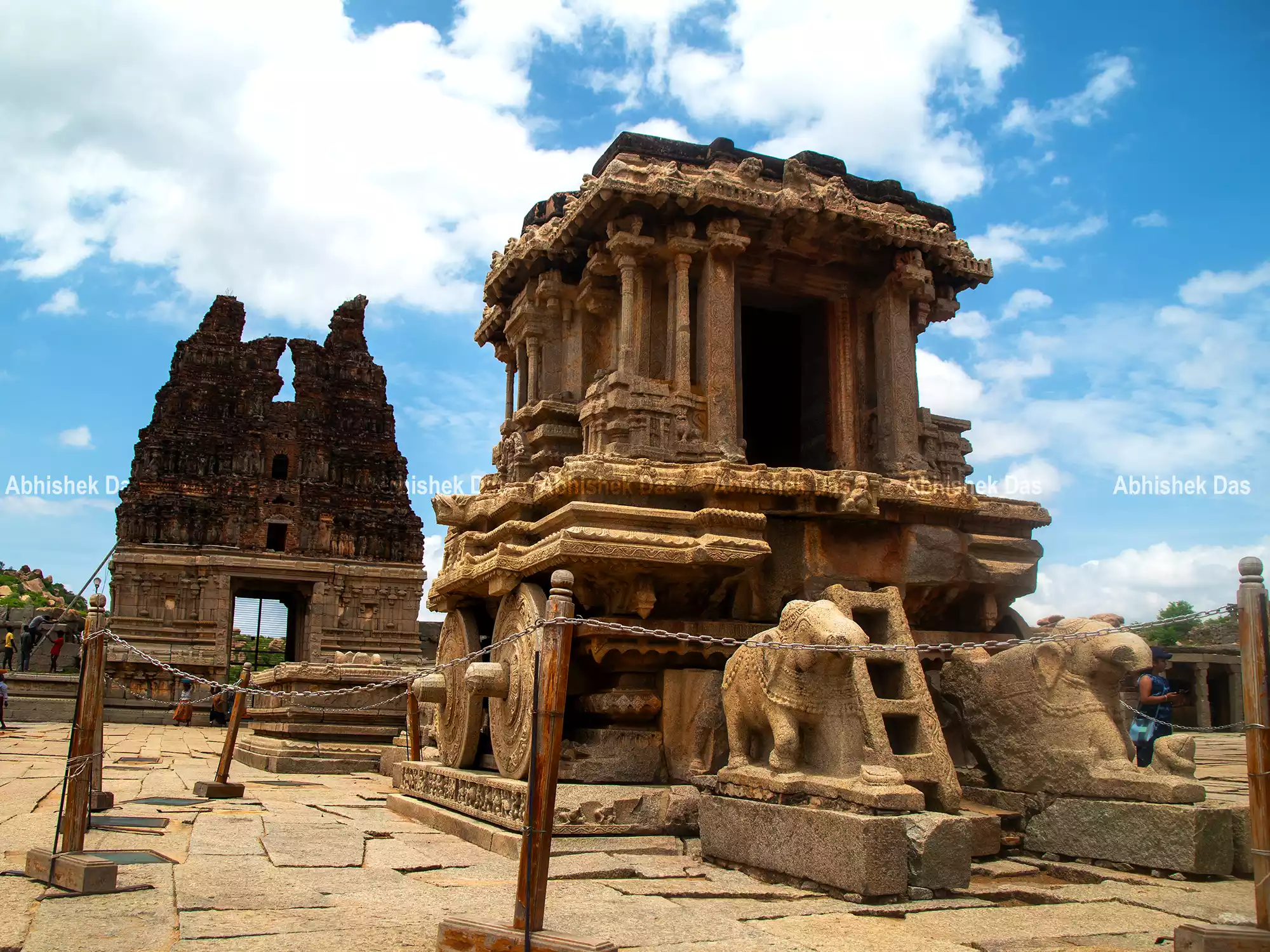
A visit to Hampi is a journey through time, where the echoes of a glorious past resonate through the meticulously carved stones and majestic temples. It’s a place where history comes alive, and every corner tells a story. Whether you’re a history buff, an architecture enthusiast, or simply a traveller seeking a unique and culturally rich experience, promises to leave an indelible mark on your heart and mind.
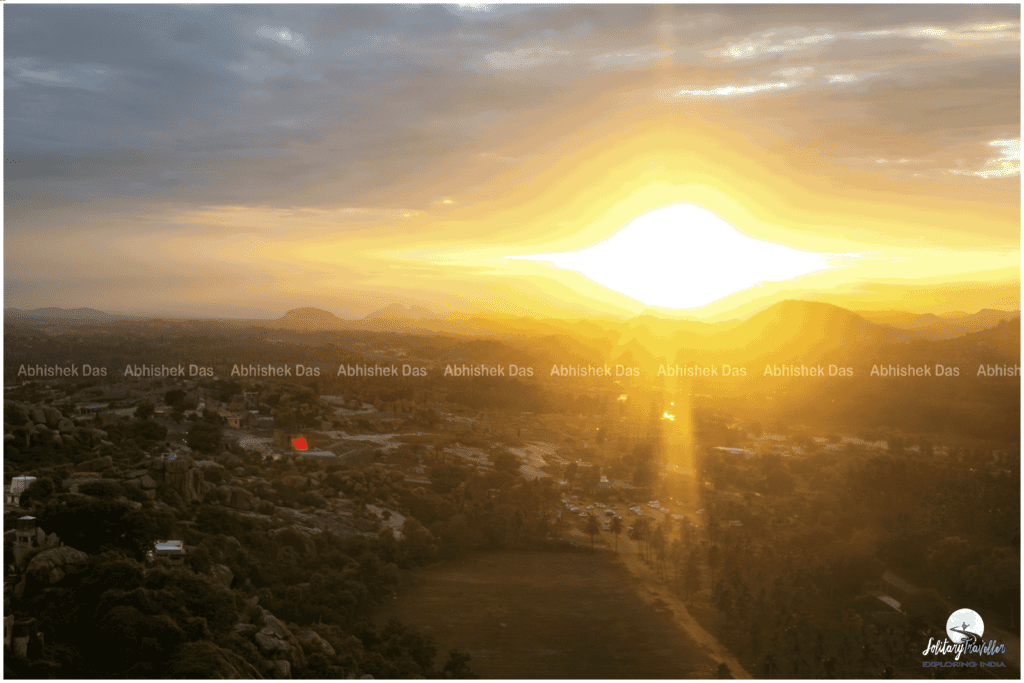
Beyond its historical significance, Hampi boasts breathtaking natural beauty. The unique rock formations, massive boulders, and lush paddy fields create a surreal and picturesque backdrop for your adventures. Solo travellers can relish the tranquillity of sunrise and sunset over the Tungabhadra River or embark on hikes to witness the panoramic views.
History Of Hampi
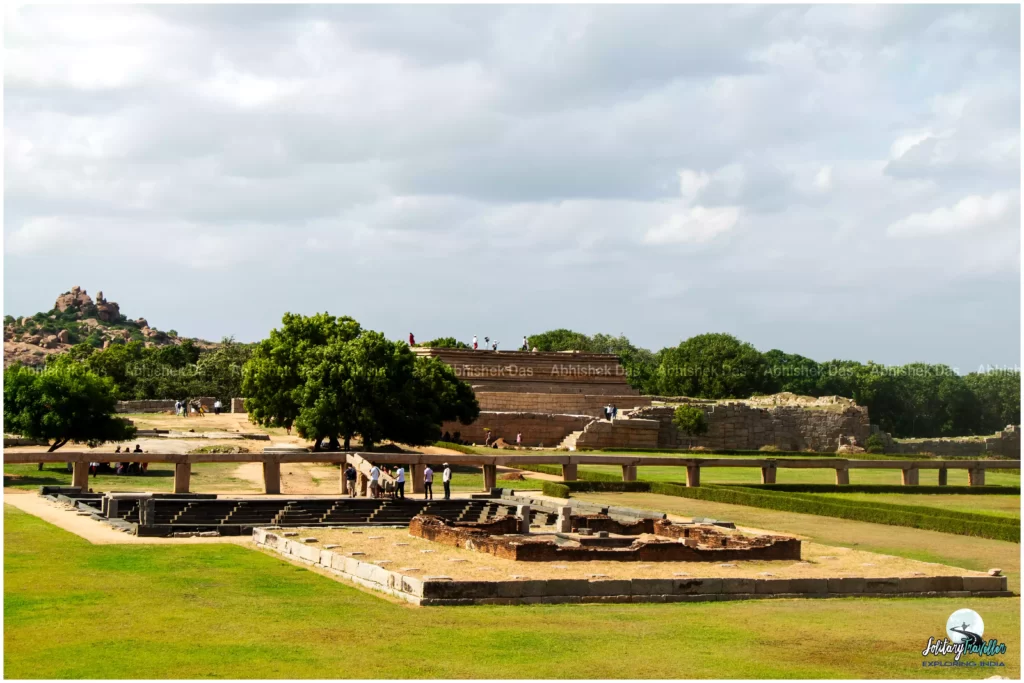
Hampi stands as a testament to the grandeur of a bygone era. This UNESCO World Heritage Site, with its awe-inspiring ruins and rich historical significance, is a must-visit destination for history enthusiasts, architecture aficionados, and anyone with a penchant for exploring the past. It was once the capital of the mighty Vijayanagara Empire, which flourished from the 14th to the 16th century.
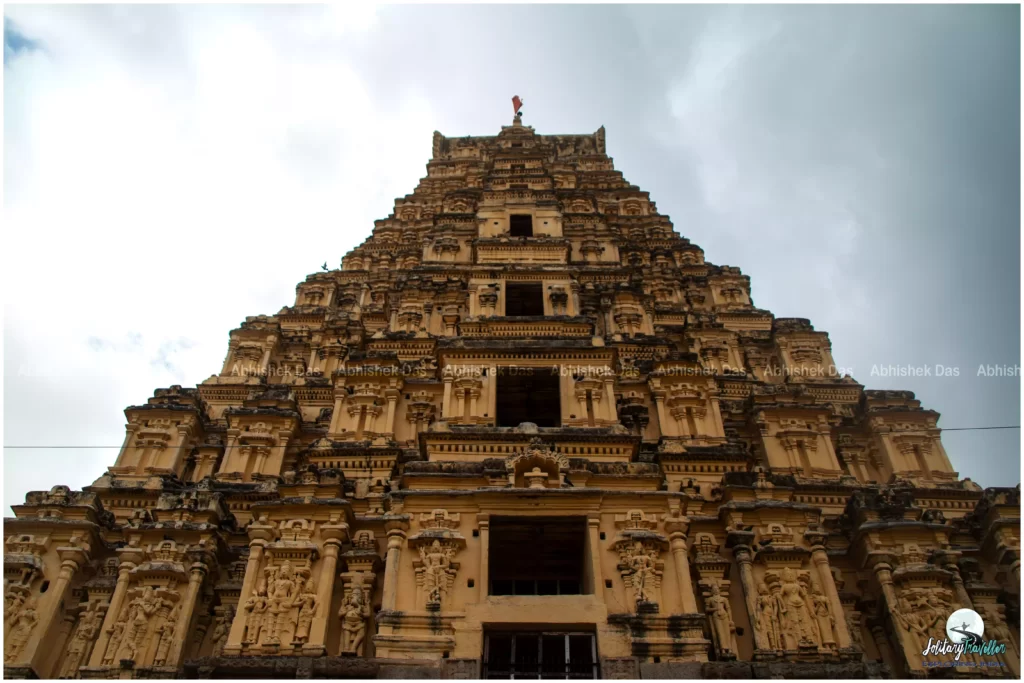
During its zenith, the empire was renowned for its wealth, power, and cultural contributions. The remnants of the glorious era can be witnessed in the form of elaborate temples, intricate carvings, and sprawling complexes that dot the landscape of Hampi. In 1565, the empire faced a catastrophic defeat at the hands of the Deccan Sultanates at the Battle of Talikota.
You may also like: Travel To The Offbeat- Find The New You!
A Journey Through Time and Ruins
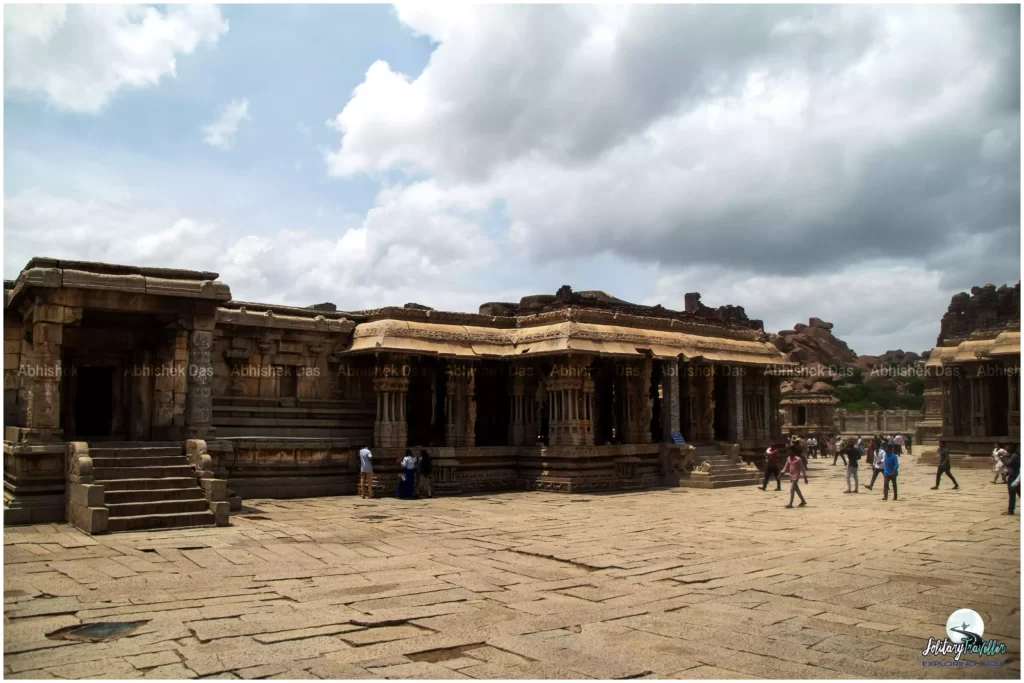
As I disembarked at Hospet, the enchanting aura of Hampi seemed to envelop me. A short tuk-tuk ride brought me to the heart of this UNESCO World Heritage Site. The sight of massive boulders, ancient temples, and the Tungabhadra River flowing gently in the background left me in awe. One of the most beautiful aspects of solo travel is the opportunity for unexpected encounters.
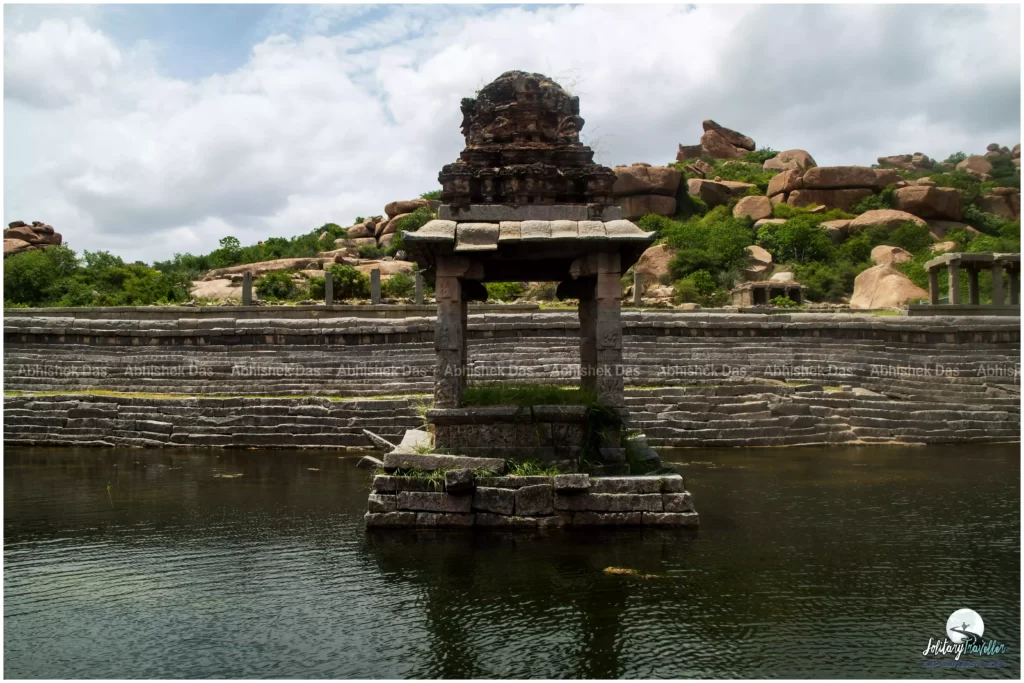
I struck up conversations with fellow travellers from across the globe, sharing stories and tips. For the adventurous souls, rock climbing and bouldering on Hampi’s unique landscape are popular activities. So, pack your bags, step back in time, and immerse yourself in the captivating world of Hampi.
Anjanadri Hills
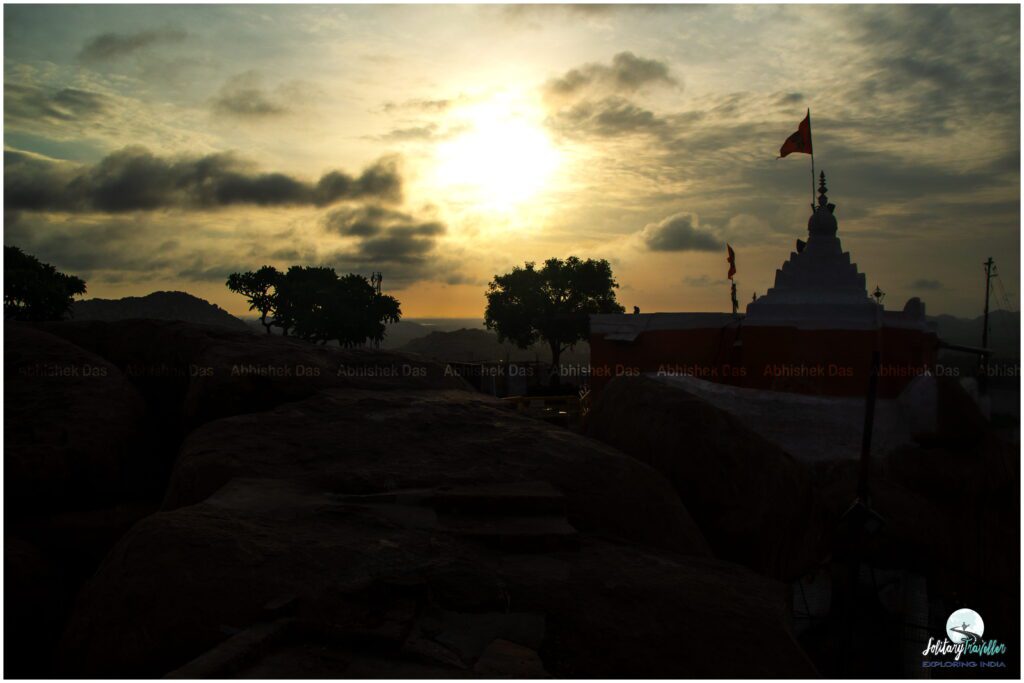
According to Hindu mythology, Anjanadri Hills are where Lord Hanuman was born to Anjana and Kesari. This picturesque destination offers solo travellers a serene escape into nature’s embrace and a glimpse into the spiritual heart of India. Anjanadri Hills offers breathtaking views of sunrise and sunset over the Tungabhadra River and the neighbouring hillocks.
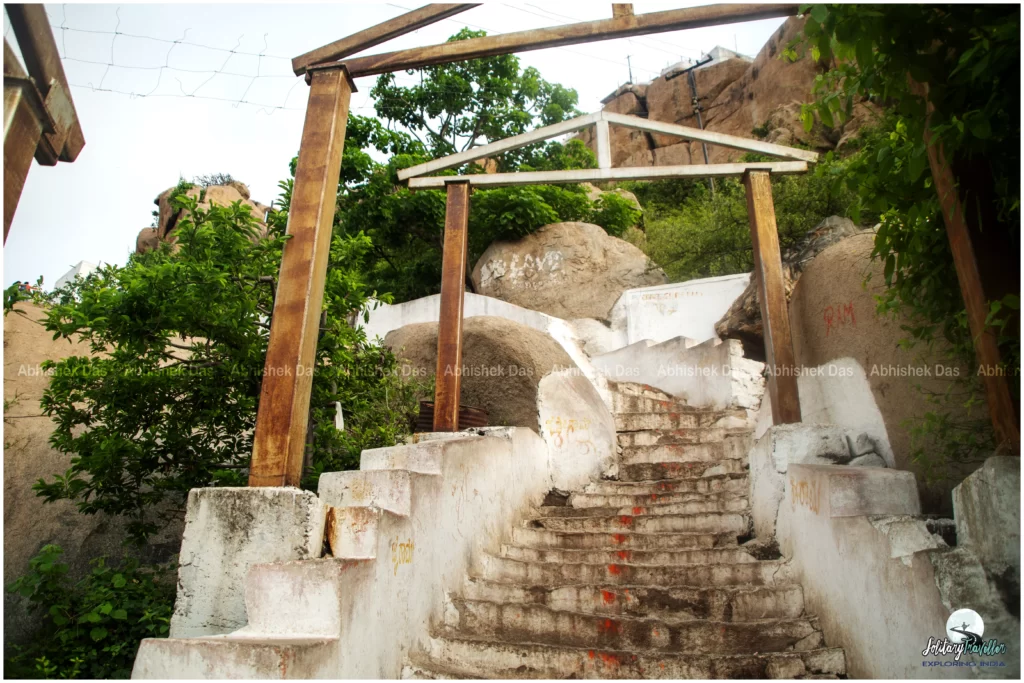
The hike to Anjanadri Temple is relatively easy, making it suitable for solo travellers of all fitness levels. The trail winds through rocky terrain and lush vegetation, with frequent stops to enjoy the views and click pictures. Keep an eye out for the diverse flora and fauna of the region.
Virupaksha Temple
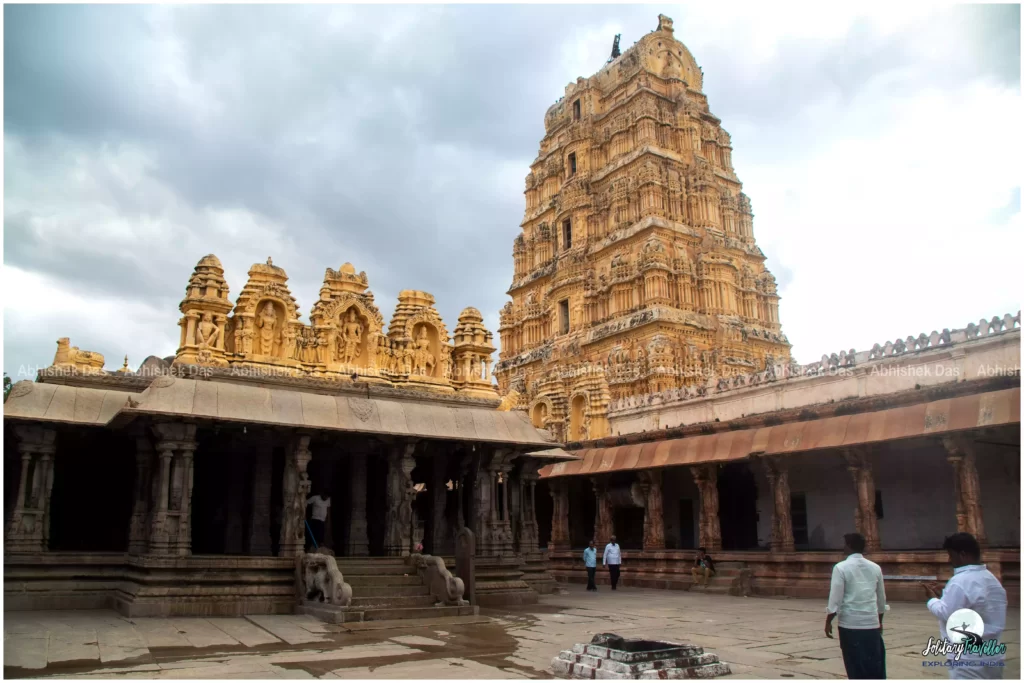
My next destination was Virupaksha Temple, a sacred shrine dedicated to Lord Shiva, where centuries-old traditions converged with the spiritual aura of India. As I approached the temple, its towering gopuram (gateway tower) loomed above, adorned with intricate carvings depicting stories from Hindu mythology.
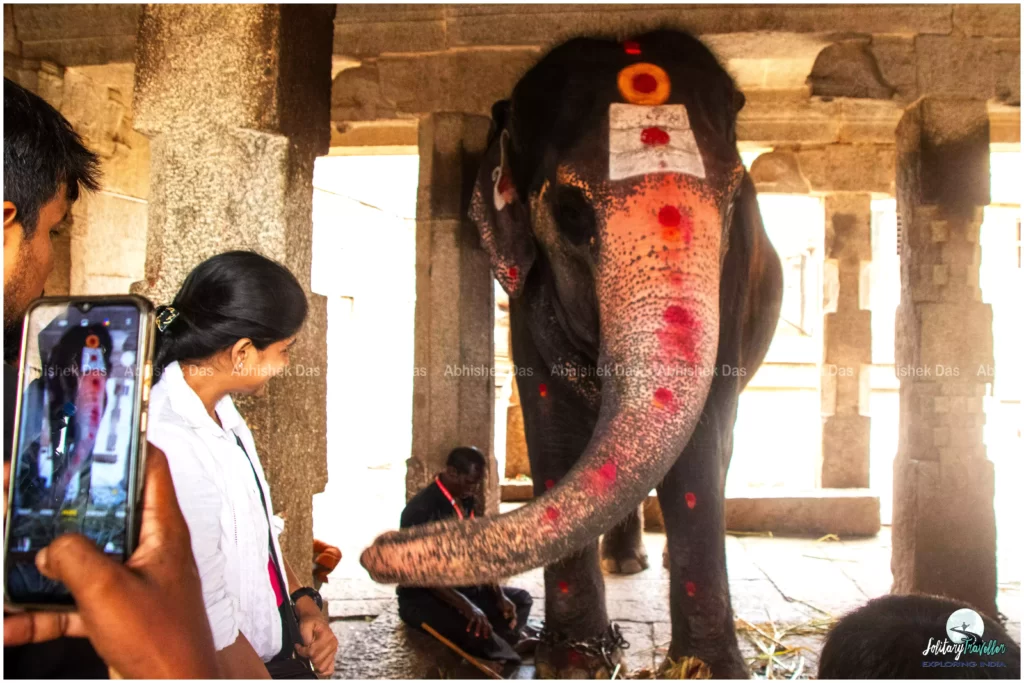
As I entered the temple, I noticed a commotion near a courtyard. There, stood Elephant Rani, not just any pachyderm; she was a revered presence at Virupaksha Temple, a symbol of auspiciousness and a beloved member of the temple family. As I ventured further into the labyrinth of history and spirituality it offered, I carried with me the blessings and the enduring lessons of my solo odyssey.
You may also like: Exploring The Temple City- Madurai
Vittala Temple
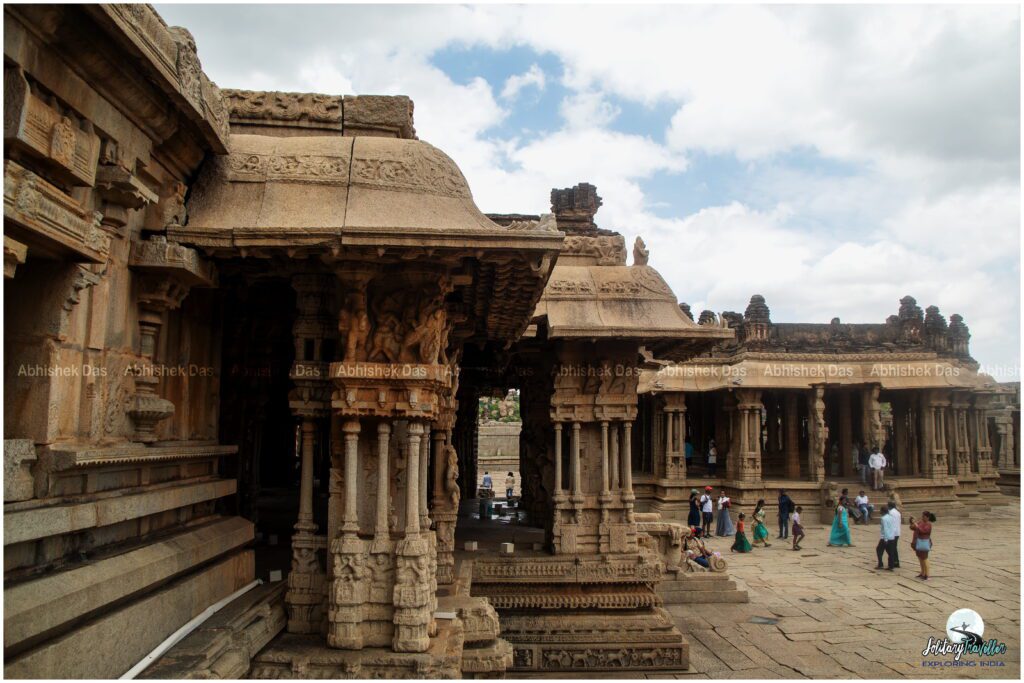
The Vittala Temple, dedicated to Lord Vittala, a form of Lord Vishnu, is renowned for its architectural splendour and intricate craftsmanship. As a solo traveller, I have the freedom to explore this magnificent temple at my own pace. Taking my time to admire the 56 musically inclined pillars in the Ranga Mandapa, marvel at the majestic stone chariot,
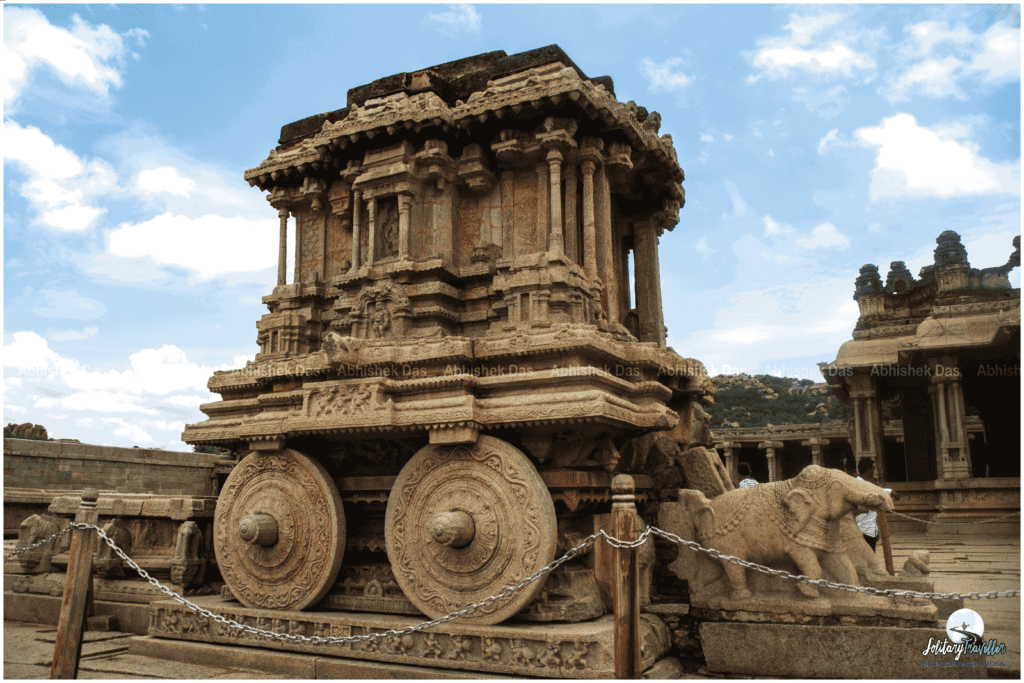
and lose myself in the labyrinthine corridors adorned with mesmerizing bas-reliefs that depict tales from Hindu mythology. Beyond its architectural marvels, the Vittala Temple provides a serene spiritual sanctuary. It’s a chance to immerse yourself in history, art, and spirituality.
Lakshmi Narasimha Temple
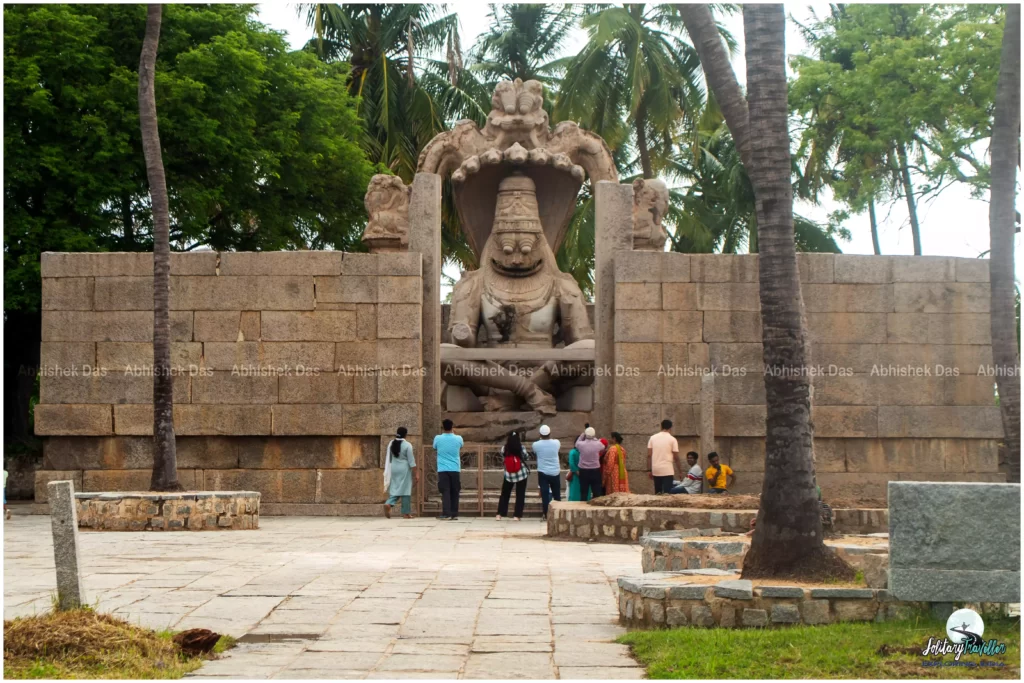
The Lakshmi Narasimha Temple stands as a testament to devotion and artistic excellence. It is situated amidst the captivating ruins of Hampi and dates back to the Vijayanagara Empire in the 16th century. The temple is renowned for its colossal monolithic statue of Lord Narasimha, seated majestically with the goddess Lakshmi on his lap.
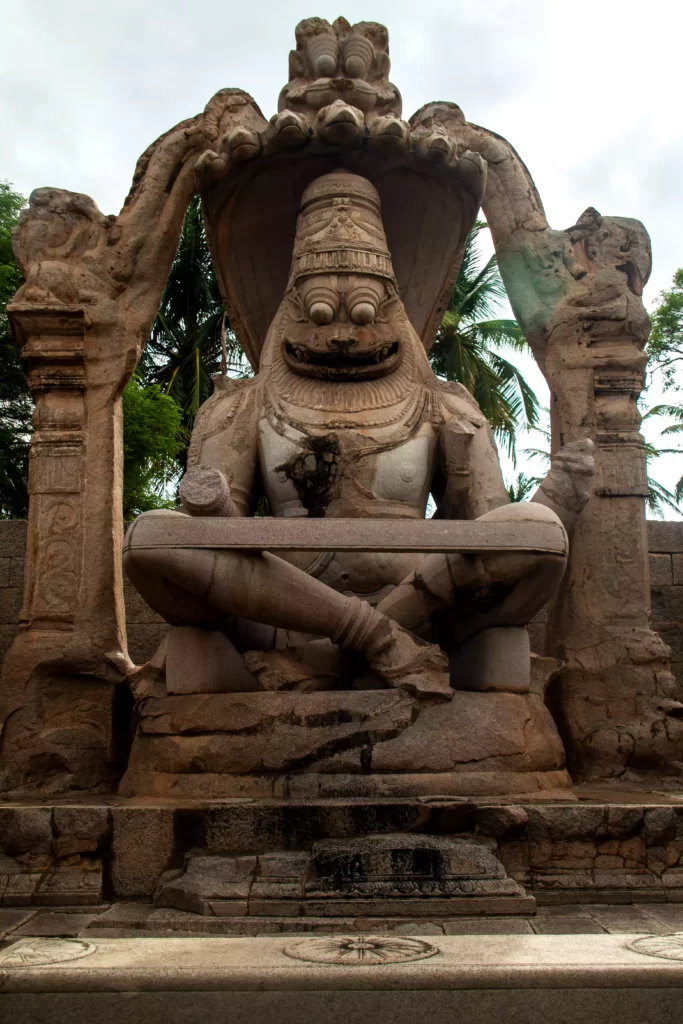
The temple’s intricately carved walls reveal a tapestry of stories from Hindu mythology. The exquisite carvings depict tales of gods, goddesses, and epic battles, serving as a visual feast for art enthusiasts and history buffs alike. I took my time to appreciate the fine details and nuances of the temple’s artistry.
You may also like: Bishnupur- The Oldest Terracotta Temple City of West Bengal
Queen’s Bath
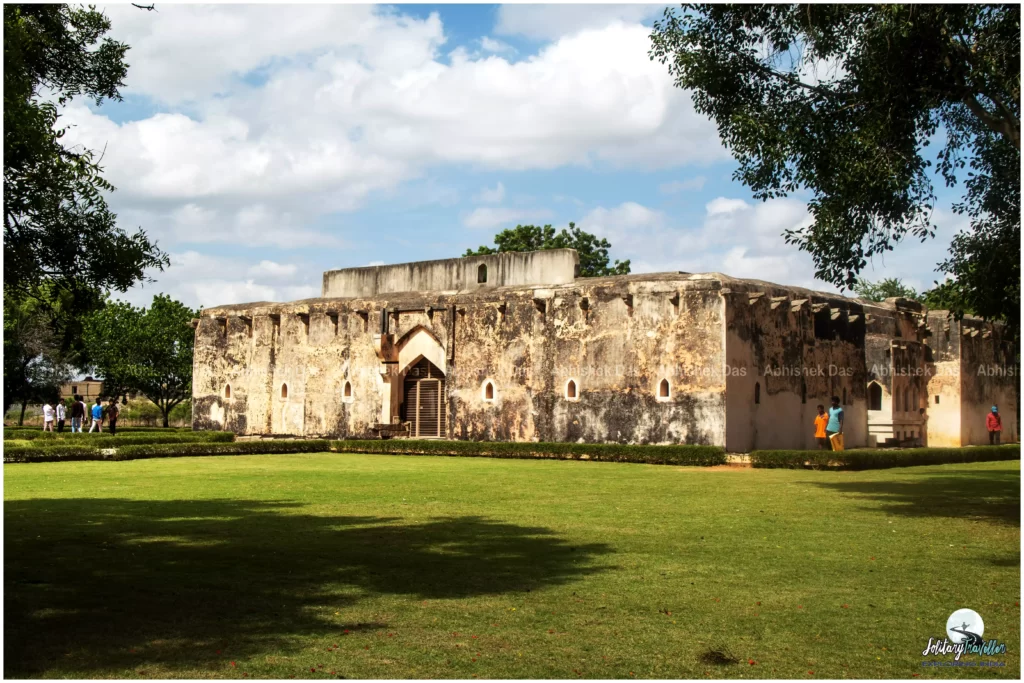
My destination for the day was the Queen’s Bath, an architectural gem that had beckoned to me ever since I first heard of it. As I walked along the dusty paths, winding through the remnants of a once-mighty empire, I couldn’t help but be struck by the surreal beauty of the landscape. Approaching the entrance, I marvelled at the grandeur of the structure. It was unlike any bath I had ever seen—more akin to a palace than a place for bathing.
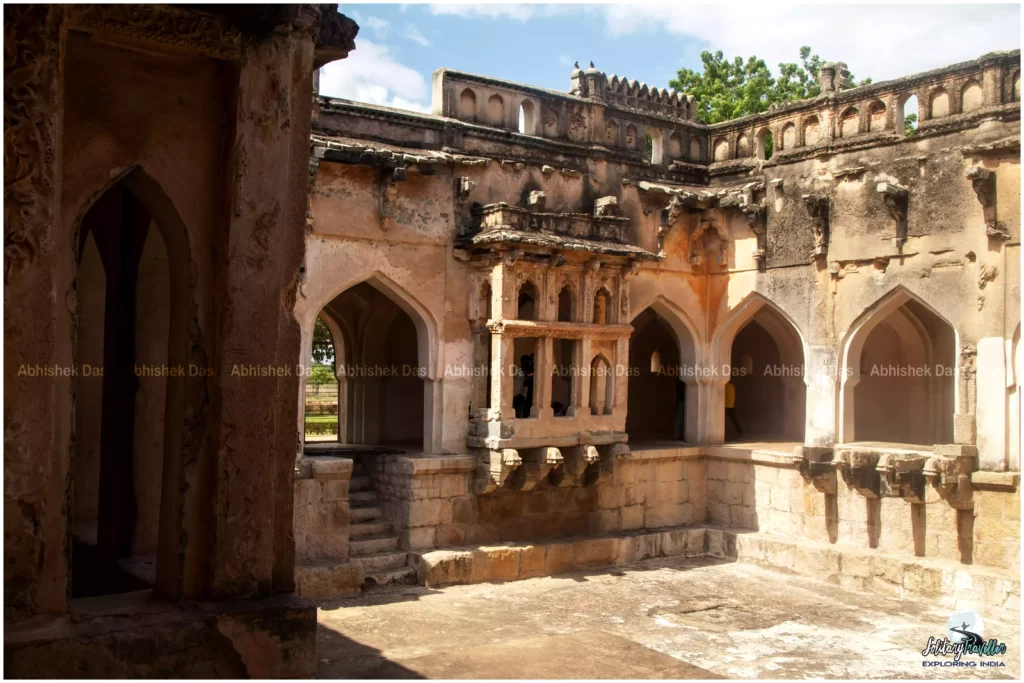
As I stepped inside, I was transported back in time. The bath was a rectangular pool, surrounded by a covered veranda adorned with ornate arches and balconies. The intricately carved walls told stories of the past, with depictions of gods, goddesses, and royal processions.
Mahanavami Dibba
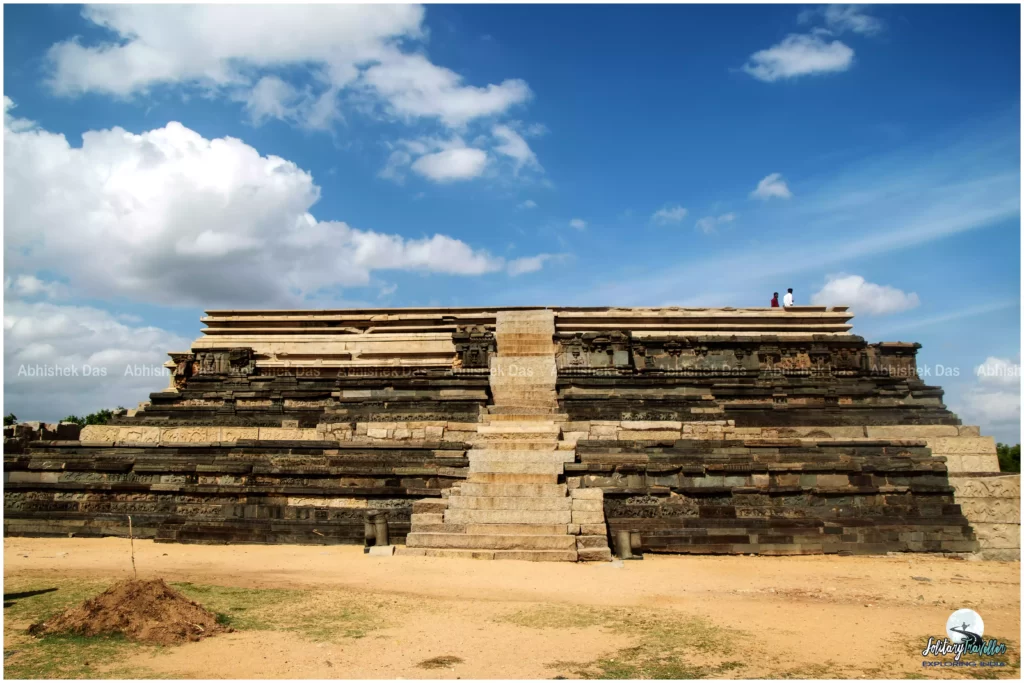
My journey led me to the Royal Enclosure, where the Mahanavami Dibba stood proudly. The moment I laid eyes on this magnificent platform, I was awestruck. The Mahanavami Dibba, or the Great Platform, was a massive three-tiered structure adorned with ornate carvings, a testament to the opulence of the Vijayanagara Empire.
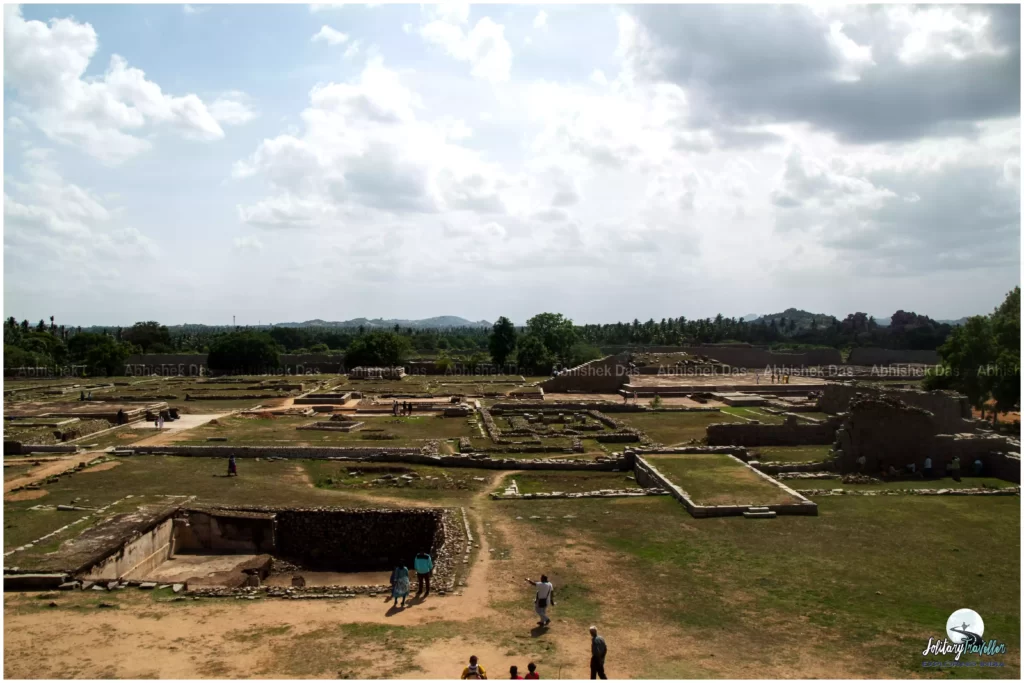
I had the privilege of exploring the Mahanavami Dibba at my own pace. I touched the intricately carved pillars, marvelled at the craftsmanship, and let my imagination wander through the annals of history. Sitting atop the platform, I closed my eyes and could almost hear the echoes of centuries-old music and laughter that had once filled the air.
You may also like: 10 Famous Historical Monuments of Medieval India
Black Stone Pushkarani
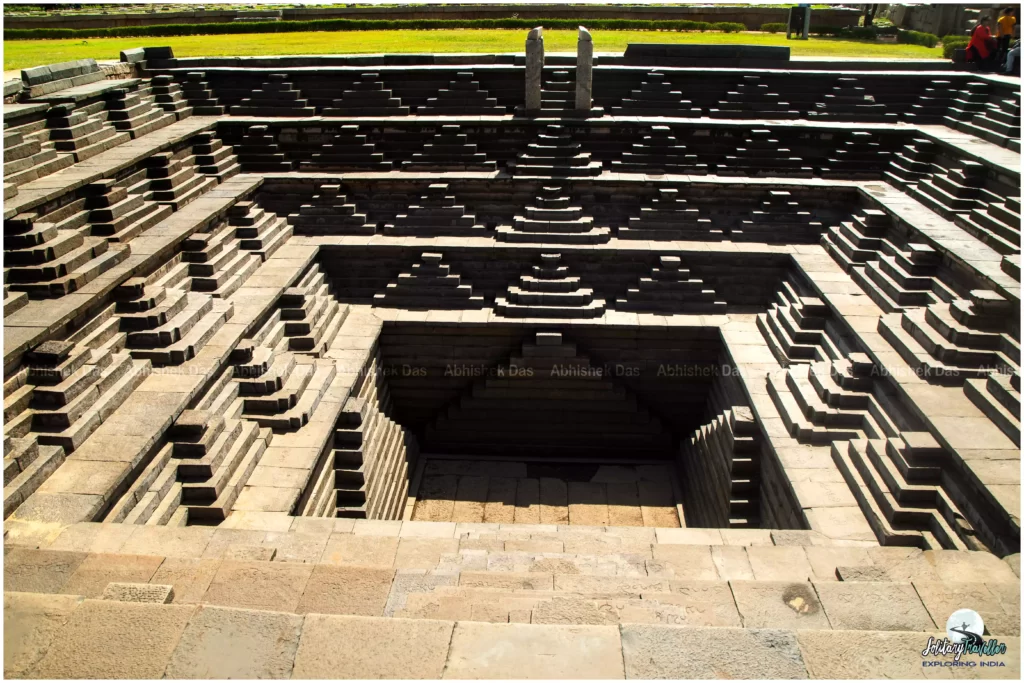
The Black Stone Pushkarani, also known as the Stepped Tank, came into view, and my breath caught in my throat. It was a sight to behold—carved out of solid black stone, with steps leading down to a pristine pool of water. The tank was surrounded by a collonaded corridor adorned with intricate carvings that seemed to narrate tales of centuries past. As I continued to explore the Black Stone Pushkarani, I couldn’t help but wonder about the rituals and ceremonies that had once taken place here. It had been a place of purification and spiritual significance, a place where the people of the Vijayanagara Empire had come to seek solace and connection with the divine.
Hazararama Temple
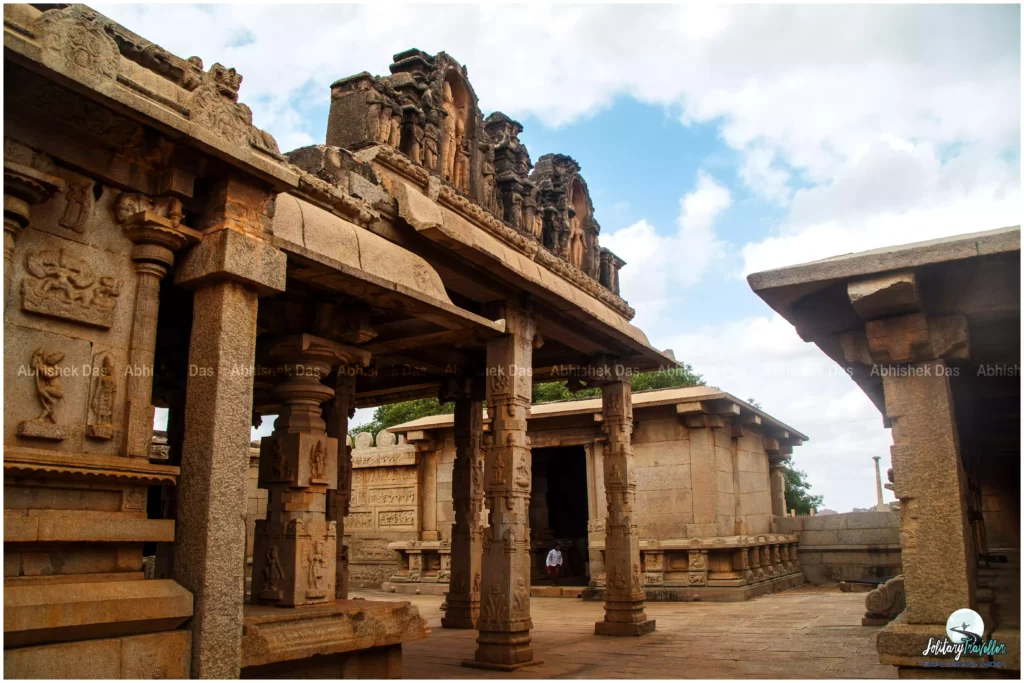
One place captured my imagination from the moment I read about it—the Hazararama Temple. As the temple came into view, I was struck by its simplicity and elegance. The Hazararama Temple, dedicated to Lord Rama, was a masterpiece of Vijayanagara architecture.
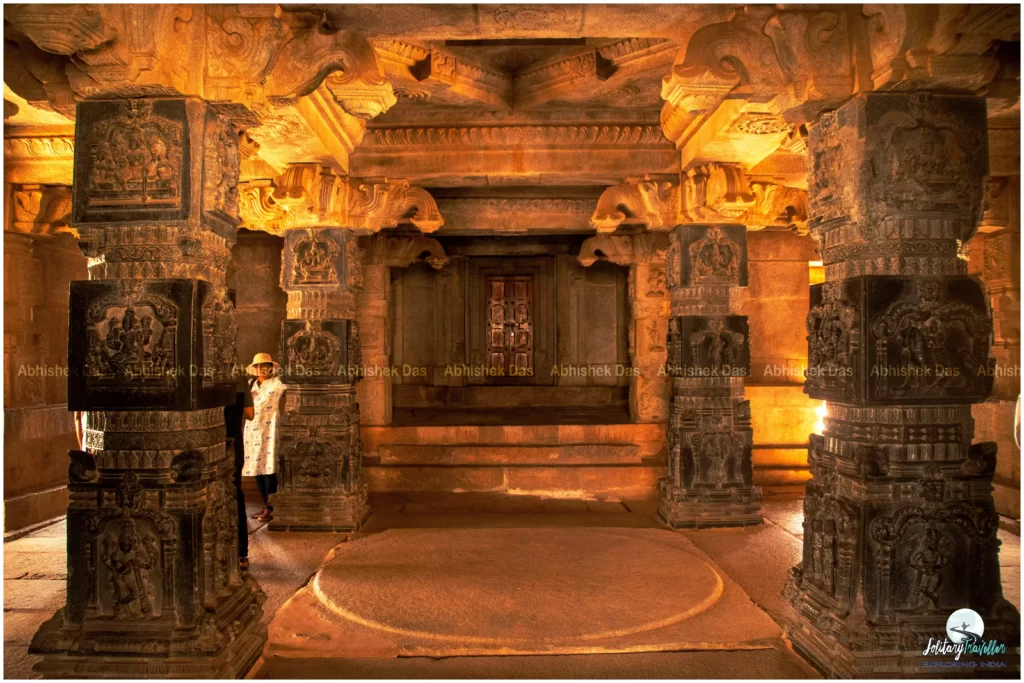
Its outer walls were adorned with intricate bas-reliefs that depicted scenes from the Ramayana, the epic tale of Lord Rama’s journey. Inside the temple, I marvelled at the intricacy of the carvings. The walls were adorned with scenes of Lord Rama’s life, from his birth to his heroic battles, all rendered with exquisite detail. The play of light and shadow on the stone added depth to the carvings, creating an almost ethereal atmosphere.
You may also like: 10 Famous Museums in India for Every History Buffs
Monolithic Bull
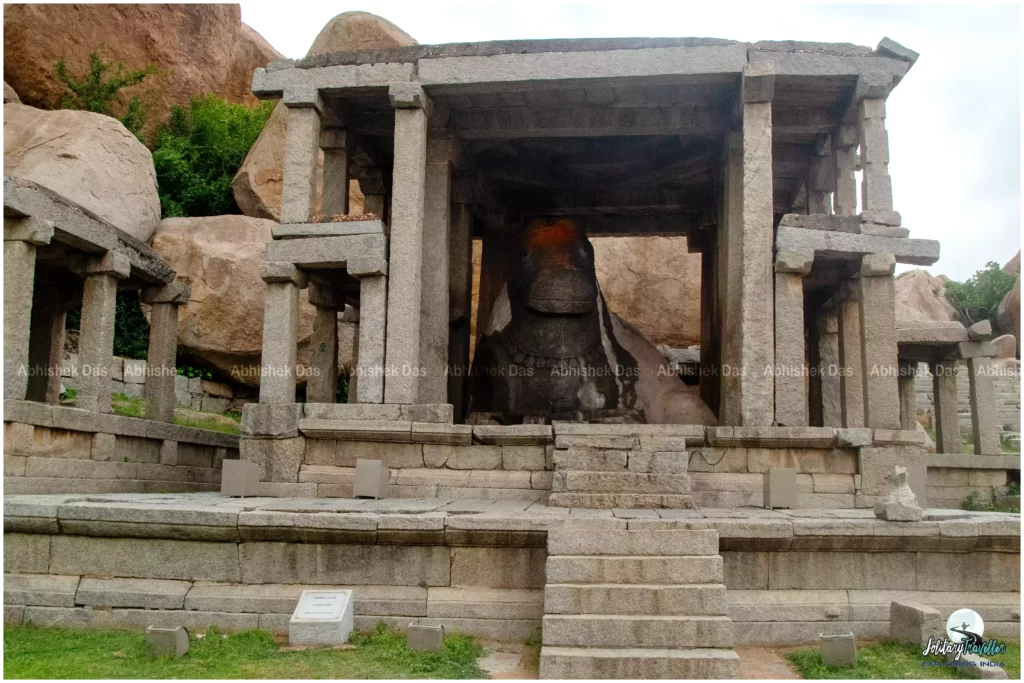
The Monolithic Bull was one of the most iconic sculptures in Hampi, and it was a testament to the architectural and artistic brilliance of the Vijayanagara Empire. The giant statue, carved out of a single boulder, depicted Nandi, the sacred bull and mount of Lord Shiva. I had the luxury of time to fully appreciate the Monolithic Bull. I walked around it, marvelling at the skill of the artisans who had sculpted this masterpiece centuries ago. The rock had weathered the test of time, yet the bull’s majesty remained undiminished. As the day progressed, I reluctantly tore myself away from the Monolithic Bull, knowing that I had other wonders of Hampi to explore.
Matunga Hill
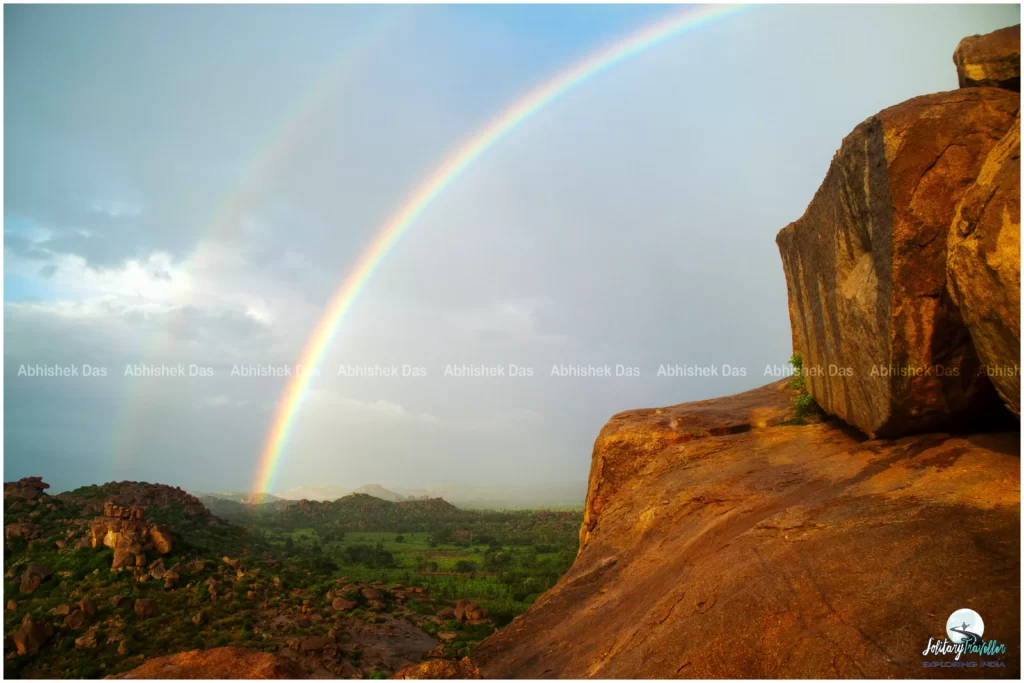
As Matunga Hill came into view, I was struck by its prominence. Rising majestically above the surrounding terrain, it stood as a sentinel guarding the secrets of the past. The hill held a special place in the hearts of the people of Hampi, not just for its natural beauty but for the spirituality it embodied.
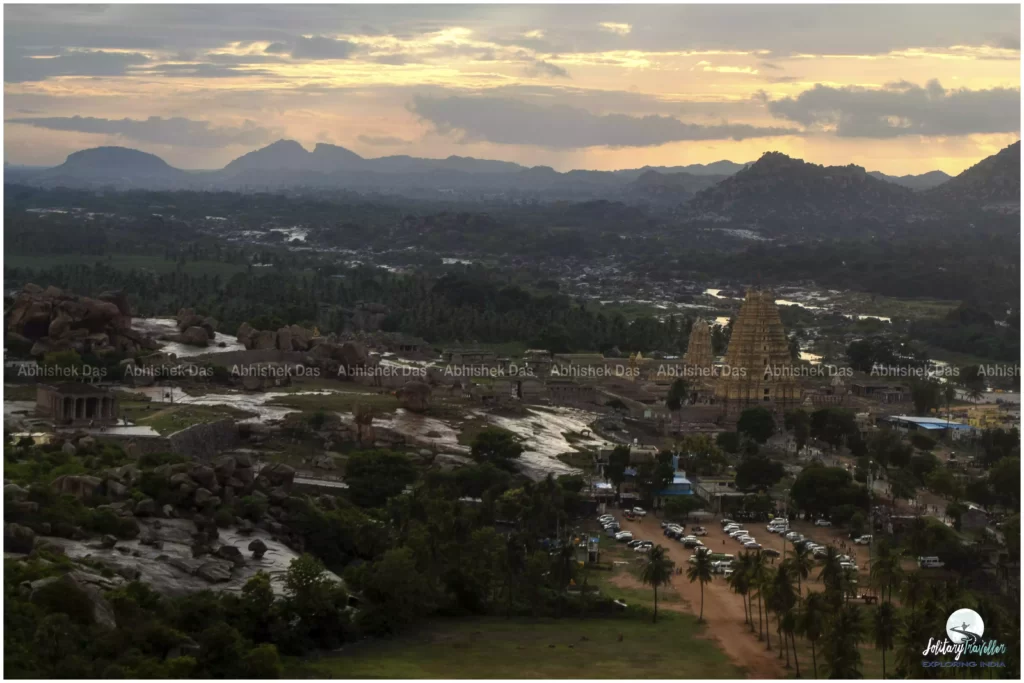
I reached the summit, and my breath was taken away by the climb and the breathtaking panorama that unfolded before me. From Matunga Hill’s vantage point, I had an unobstructed view of Hampi’s ancient ruins, the Tungabhadra River, and the surrounding landscape. It was a sight to behold, and I felt a profound connection to the town’s rich history and natural beauty.
Tungabhadra River
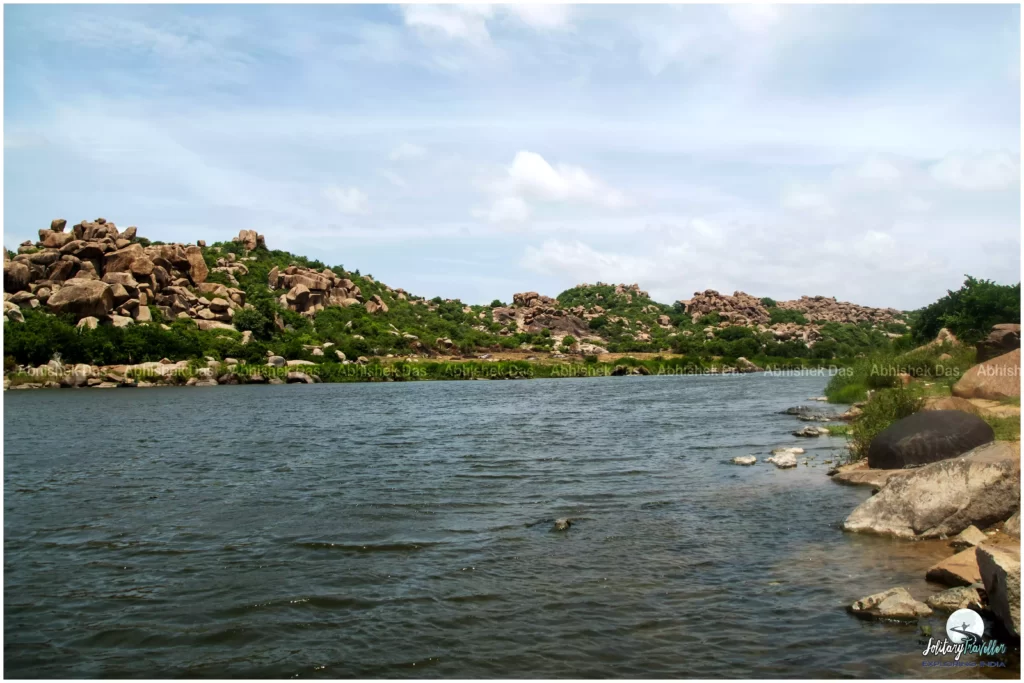
I followed the meandering path that led to the riverbank. Along the way, I encountered friendly locals who greeted me with warm smiles and offered me glimpses into their way of life. The atmosphere was imbued with a sense of tranquillity, as if time had stood still in this part of the world. As I approached the Tungabhadra River, the sound of flowing water reached my ears.
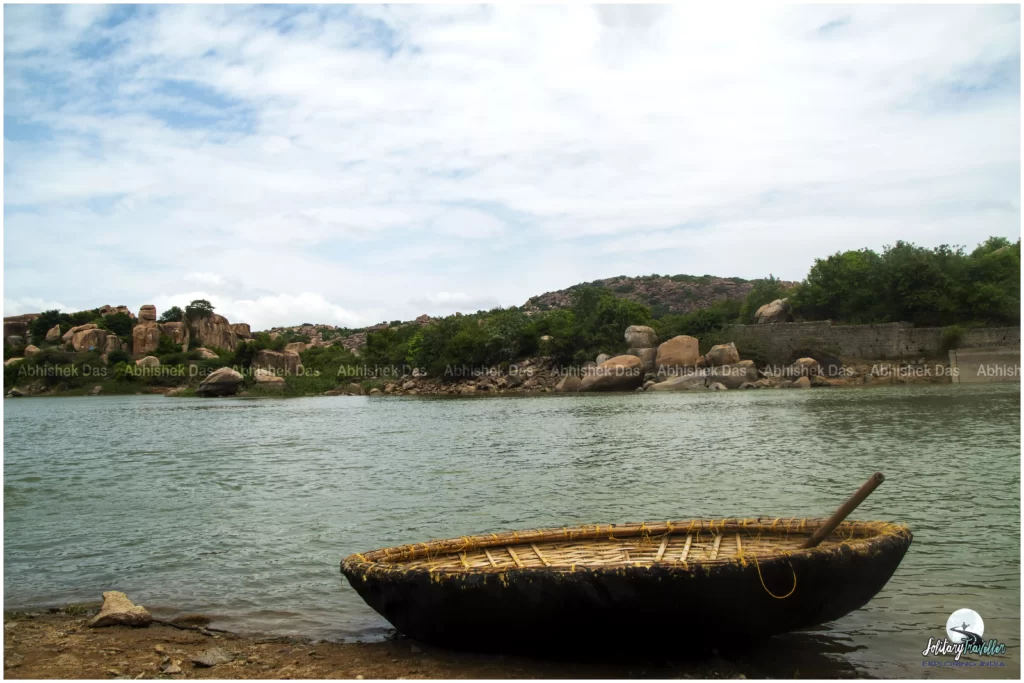
I sat down by the riverbank, my feet dipping into the cool, clear waters. It was a moment of pure bliss, a chance to connect with nature and reflect on the world’s beauty. The Tungabhadra River flowed steadily, carrying with it the stories and dreams of those who had lived along its banks for centuries.
Tips: Remember that Hampi is a UNESCO World Heritage Site, and it’s essential to be respectful of its cultural and historical importance.
You may also like: 10 Advantages of Solo Travelling
How to Travel?
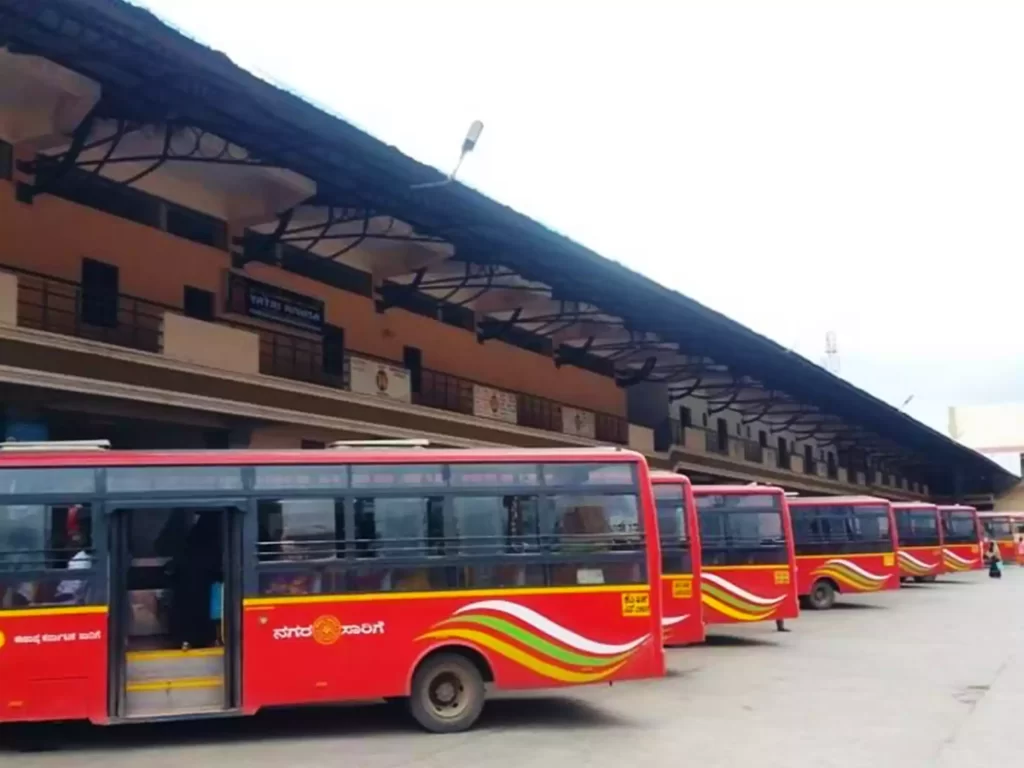
Travelling in Hampi can be a rewarding and memorable experience, as the town is steeped in history and offers a unique blend of archaeological wonders, stunning landscapes, and a serene ambience. The best way to explore Hampi’s historical sites and the surrounding countryside is by renting a bicycle or a scooter. Many guesthouses and shops in Hampi offer scooters and bike rentals. Auto-rickshaws are readily available and can be hired for short trips within Hampi or to visit sites outside the town. Make sure to agree on a fare before starting your journey.
Fair and Festivals
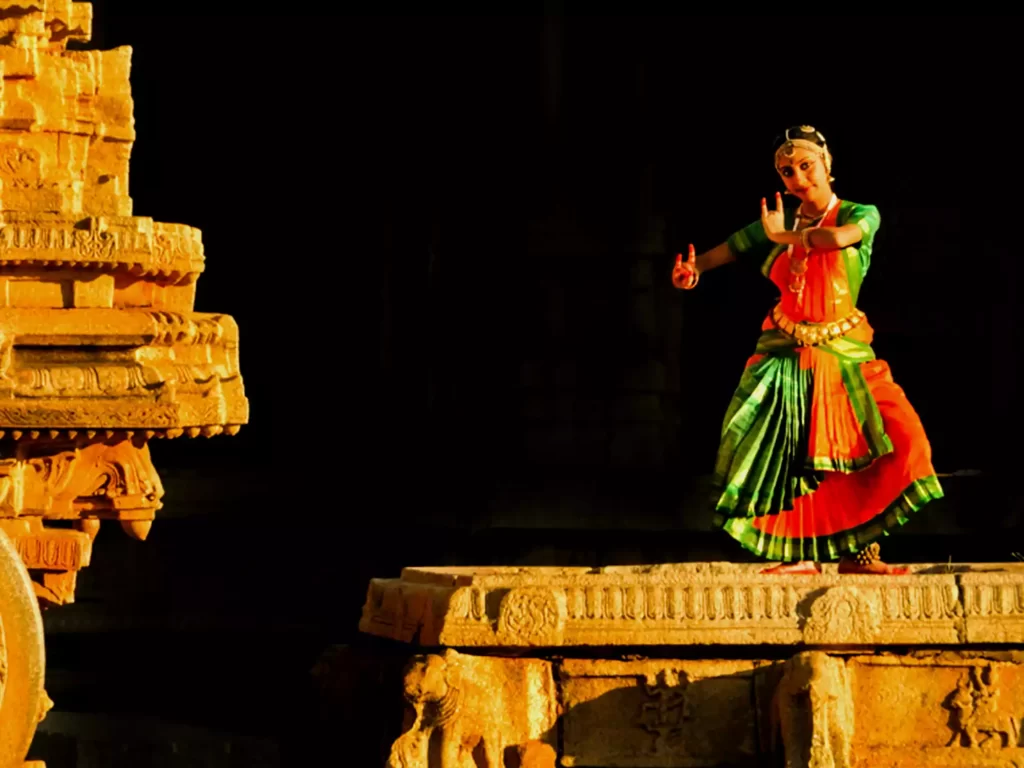
Hampi, with its rich history and cultural heritage, celebrates various festivals and fairs throughout the year. The Hampi Utsav, also known as the Vijaya Utsav, is one of the most significant cultural festivals in Hampi. It usually takes place in January or February and spans three days. Pattadakal hosts a dance festival in January or February. Virupaksha Temple, one of the most sacred temples in Hampi, hosts an annual Cart festival during March or April.
Local Cuisines to Try

When visiting Hampi, be sure to try some of these delicious dishes and treats: Bisi Bele Bath is a spicy and flavorful rice and lentil dish cooked with vegetables and aromatic spices; Masala Dosa iconic South Indian dish that consists of a thin, crispy rice and lentil crepe filled with a spiced potato mixture; Rava Kesari is a sweet semolina dessert made with ghee, sugar, cardamom, and saffron; Obbattu is a sweet flatbread made with a filling of chana dal (split chickpeas), jaggery, and cardamom. The region’s cuisine is known for its diverse flavours and vegetarian options, making it a delightful experience for food enthusiasts.
You may also like: 10 Traditional Cuisines from Different Regions of India
Other Activities
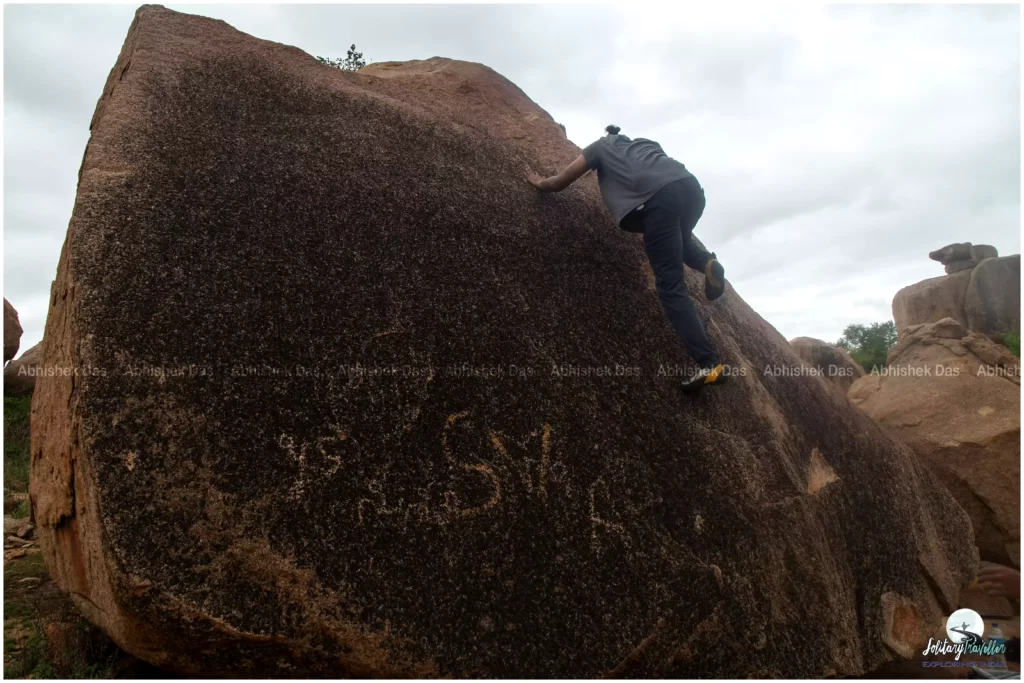
Whether you’re interested in exploring ancient ruins, embracing nature, or immersing yourself in local culture, there’s something for everyone in this captivating town. If you’re an adventure enthusiast, you can indulge in rock climbing in the unique landscape of Hampi. The granite boulders offer excellent opportunities for both beginners and experienced climbers. Take a traditional coracle boat ride on the Tungabhadra River. These round, bowl-shaped boats offer a unique and serene way to experience the river. Take a guided village walk to learn about the rural life and traditions of the region. You’ll have the chance to interact with locals and gain insights into their daily lives.




5 Comments
5 Replies to “Travelling Solo to Hampi: A Story of Ancient Town”